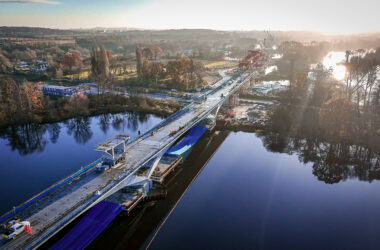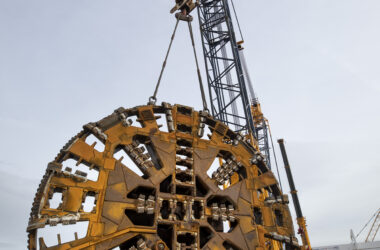Drones, also known as unmanned aerial vehicles (UAVs), have been around for decades and have been used primarily for military and recreational purposes. However, recent advances in technology have led to the development of more advanced drones that are capable of performing a wide range of tasks, including building inspections and construction.

As a result, drones are starting to play a significant role in the engineering of buildings. Here are five ways drones will change the way buildings are engineered:
- Improved safety: One of the biggest advantages of using drones for building inspections is the improved safety for workers. Traditional building inspections often require workers to climb to high and potentially dangerous heights, but drones can easily access these areas and capture high-resolution images and video without putting anyone at risk.
- Enhanced accuracy: Drones are equipped with advanced cameras and sensors that can capture detailed information about a building’s structure and condition. This information can be used to create highly accurate 3D models of buildings, which can be used for a variety of purposes, including detecting structural problems and planning renovations or repairs.
- Faster inspections: Drones can fly at high speeds and cover large distances in a short amount of time, making them ideal for conducting building inspections. This means that engineers can quickly and efficiently gather the information they need to make informed decisions about a building’s structure and condition.
- Reduced costs: Traditional building inspections can be time-consuming and expensive, especially when they require the use of specialized equipment and personnel. By using drones, engineers can reduce these costs and save time and money, while still getting the information they need to make accurate assessments of a building’s condition.
- Enhanced flexibility: Drones are highly versatile and can be easily adapted to perform a wide range of tasks. For example, engineers can use drones to inspect the exterior of a building, as well as its interior, and even access difficult-to-reach areas, such as attics and crawl spaces. This flexibility allows engineers to get a complete picture of a building’s condition and plan accordingly.
Overall, the use of drones in the engineering of buildings is revolutionizing the way we inspect, maintain, and repair our built environment. By improving safety, accuracy, speed, cost-effectiveness, and flexibility, drones are helping engineers to make better decisions about the design, construction, and maintenance of buildings.
As technology continues to advance, we can expect to see even more applications for drones in the engineering of buildings in the future.








